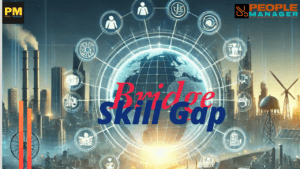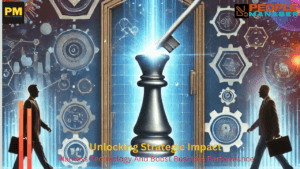Perfecting the Rules of Employee Engagement: Building and Nurturing a Thriving Work Culture
Human Resources (HR) plays a crucial role in shaping and sustaining employee engagement, serving as the linchpin between organizational goals and the well-being of its workforce-Candida Fernandez

Perfecting the Rules of Employee Engagement: Building and Nurturing a Thriving Work Culture, by Candida Fernandez
In today’s dynamic and competitive business landscape, employee engagement stands as a cornerstone for organizational success. Going beyond mere job satisfaction involves creating a workplace where employees feel connected, valued, and motivated to contribute their best. As the global workforce navigates evolving challenges, the significance of fostering a positive and engaging work environment has never been more crucial. Human Resources (HR) plays a crucial role in shaping and sustaining employee engagement, serving as the linchpin between organizational goals and the well-being of its workforce. That said, organizations continue to be largely unaware of or ill-equipped to implement employee engagement effectively due to challenges posed by various factors, including evolving work dynamics, frequent change management, cultural diversity, and hybrid work, just to name a few. The good news is that the HR function can overcome these challenges in more than one way with internal work practices that align with the overall mission of helping employees thrive at work.
Key Factors for Driving Employee Engagement:
Role of Leadership
Leadership serves as the cornerstone of a meaningful employee experience. Research consistently highlights the pivotal link between leaders and employees. When this connection is weak, employees may feel disconnected from other aspects of the organizational culture. By emphasizing alignment with the corporate purpose, trust-building, and shared decision-making, leadership at all levels empowers employees to find purpose, seize opportunities, achieve success, and foster a sense of well-being. It fosters camaraderie, celebrates successes, and promotes appreciation when goals are met. Various learning programs, such as coaching and job shadowing, cross-functional onboarding initiatives, integrated recognition systems, and comprehensive wellness programs, offer avenues for personal growth and facilitate interactions among colleagues from different teams.
Communication and Trust
Creating a positive workplace culture demands intentionality and alignment with the company’s vision. Transparent policies and practices that promote inclusivity, meaningful connections, and a sense of belonging are essential. Open and transparent communication empowers employees with the right tools to reach their maximum potential.
Skill Building and Personalized Development
A strong emphasis on individual and organizational growth alignment is crucial. Performance management systems should integrate development goals, ensuring a clear connection between individual learning journeys and broader organizational objectives. Diverse learning methods, from online tools to on-the-job experiences, empower employees at all levels to continually develop their skills.
Balancing flexibility and organizational needs
In an era dominated by flexible work arrangements, embracing hybrid work policies enables employees to benefit from flexibility while also meeting organizational requirements. Defined office and remote working days promote effective collaboration among teams, nurturing a sense of engagement and connection.
The Power of Recognition
This should be seamlessly woven into the employee experience, starting from personalized onboarding experiences to day-to-day interactions. Research findings in the Global Culture Report underscore the transformative impact of integrated recognition on various facets of the workplace, including increased great work, high engagement, a thriving culture, and reduced employee attrition and burnout.
Diversity, equity, and inclusion
Commitment to promoting these three elements in an organization is essential while supporting equal employment opportunities, fair evaluation processes, uniform policies, and benefits across all levels. From insurance coverage to learning opportunities, inclusivity has to be ingrained in the organizational fabric.
Work-life integration
Recognizing the fast-paced nature of today’s work environment, organizations acknowledge the importance of work-life integration over a traditional balance. Hybrid work arrangements and flexible hours enable employees to design their days while ensuring continued collaboration and engagement.
Metrics for success
To measure the success and impact of employee engagement initiatives, organizations employ formal feedback mechanisms. These include annual employee experience surveys, new hire experience surveys, and 30- or 90-day touchpoints in the onboarding process. The collected survey data is shared with leaders and HR teams, which helps foster a culture of continuous improvement.
Remember that the overall mission is to help employees thrive at work, and internal practices should align with the goal of:
- Connecting people to purpose: The journey begins by ensuring that employees feel connected to the purpose of the organization. Individual and team goals should be intricately linked to the larger objectives of the organization, emphasizing the impact each employee has on the company’s goals.
- Placing personal development at the core: Each individual has a unique learning journey. Organizations must acknowledge that and place personal development at the core of employee excellence with on-the-job learning and experiential workshops.
- Provide comprehensive benefits for well-being: Providing a wide range of competitive and comprehensive benefits allows individuals to make choices that align with their own and the needs of their families.
- Celebrate achievements: Whether it’s a daily small win or a significant milestone, organizations should believe in celebrating great work. Recognition and rewards should be woven into the fabric of the organization, creating a culture where achievements, no matter how big or small, are acknowledged and appreciated.
The key to successful employee engagement lies in integrating all the factors discussed above. By ensuring that internal operations are in line with the goal of facilitating employee well-being, organizations can cultivate environments where employees not only fulfill their duties but also thrive. As organizations pursue higher levels of employee engagement, these principles remain essential for cultivating a workplace atmosphere conducive to growth and wellbeing.
Read more HR news like this on PropleManager.co.in
Value our content… contribute towards our growth. Even a small contribution per month would be of great help to us. Since our establishment, we have been serving the industry through daily news and updates.
Our content is free for all, and we plan to keep it that way
Support the People Manager. Pay Here (All it takes is a minute)








